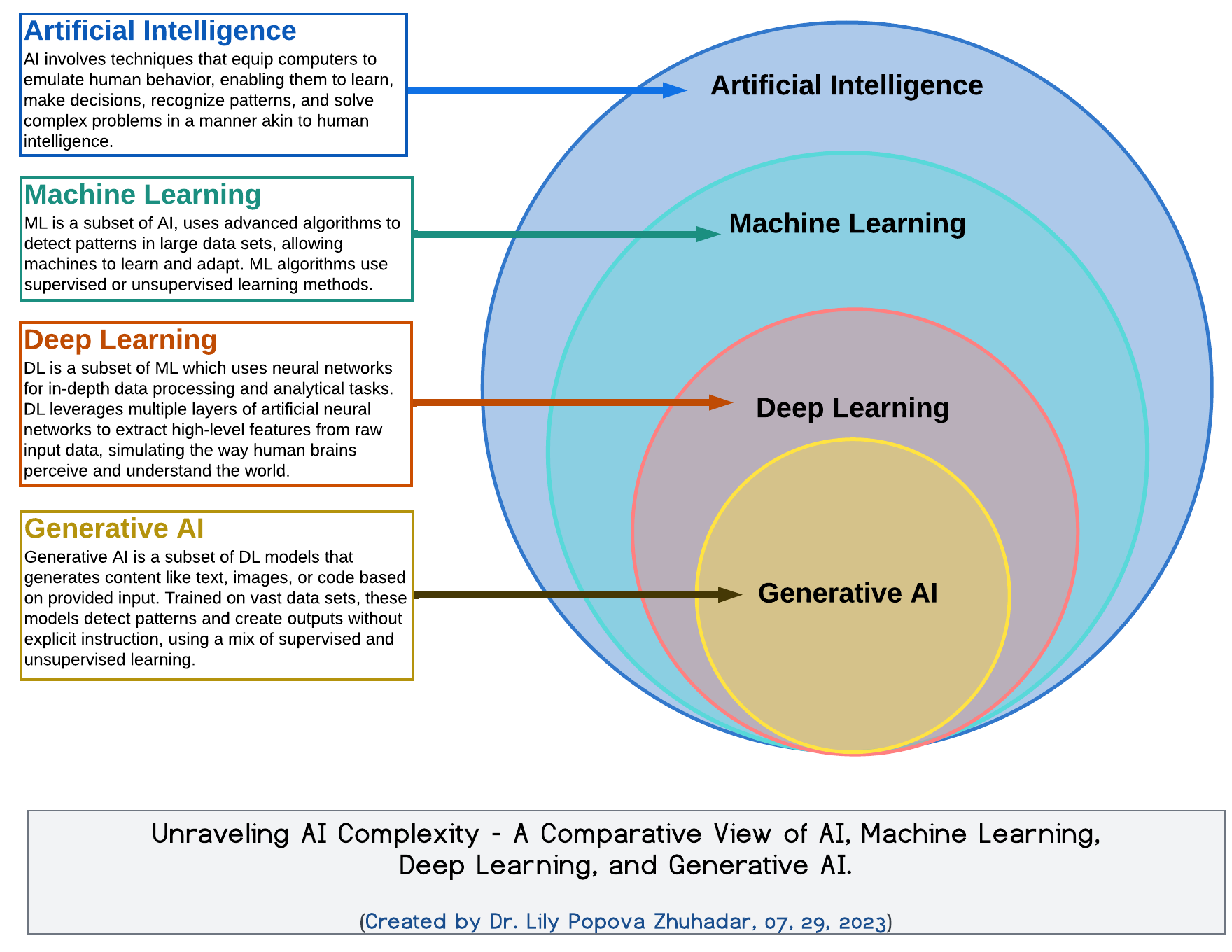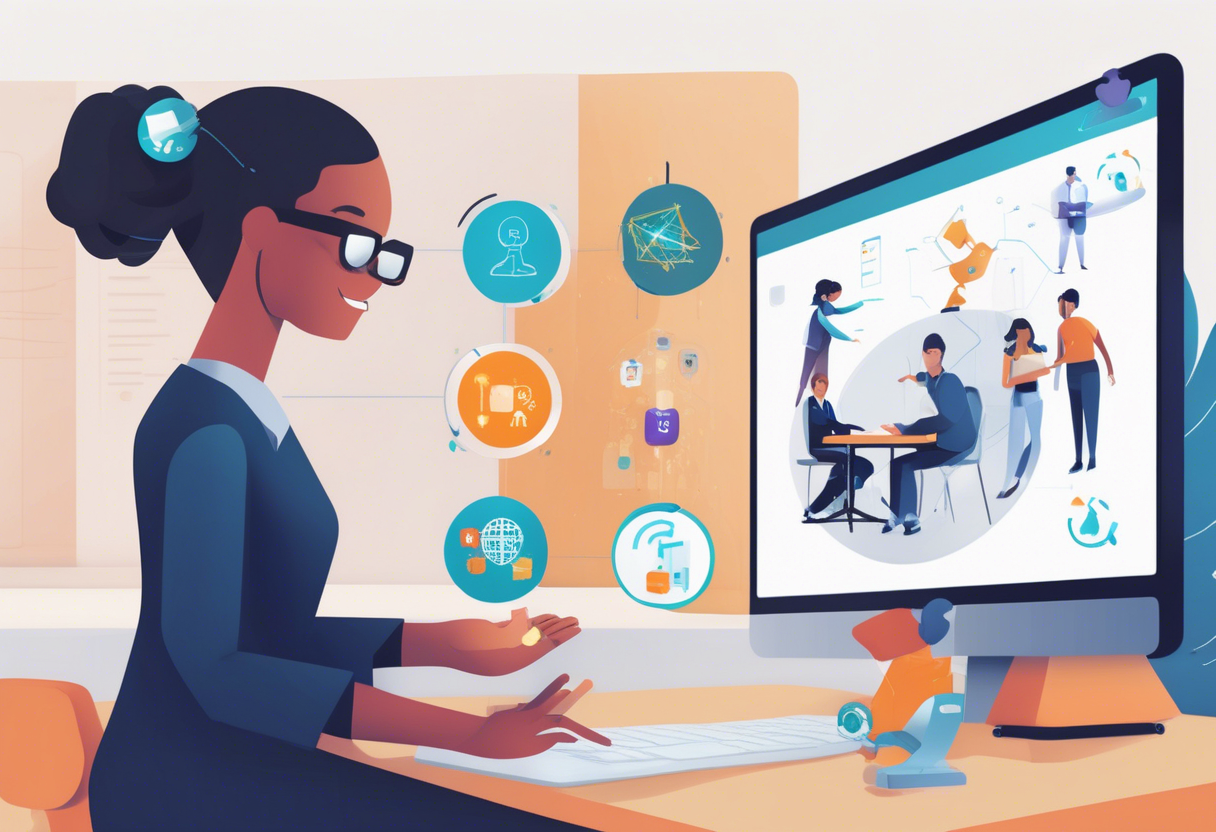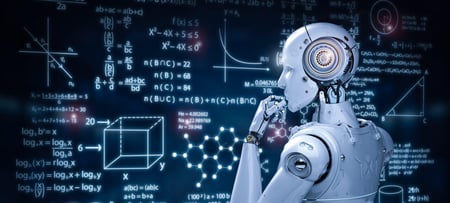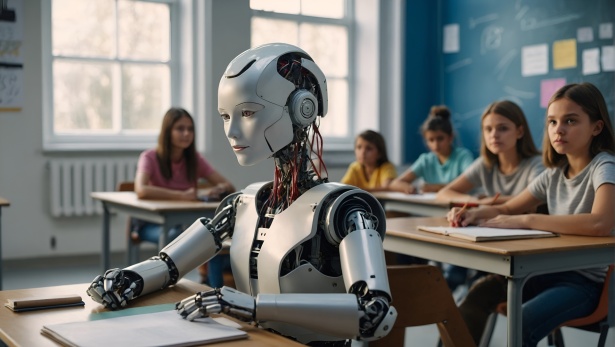
Think about a classroom where learning is tailored just for you. It's not a dream; it's real, thanks to AI. This isn't about the future—it's happening now, changing how we learn in ways we never thought possible. A recent study shows that 86% of teachers think AI will make learning much better for students. So, what makes this tech shift so special for education? Here, we'll look at how AI is changing modern education. We'll see how it customizes learning, makes it easier for everyone to access, and gets students ready for a tech-focused world. Whether you're a teacher, a parent, or a student, knowing about these changes is key as we step into this exciting new learning era!
Summary: This article discusses the transformative role of artificial intelligence (AI) in modern education, highlighting its impact on learning processes and educational outcomes. It also addresses common questions regarding the integration and implications of AI technologies in educational settings.
The Transformative Role of AI in Modern Education
Understanding AI-Powered Learning in Education
AI-powered learning is revolutionizing education by integrating artificial intelligence into classrooms. The U.S. government is prioritizing AI skills for young Americans, recognizing its importance for a digital future. This initiative starts AI education early and continues through college, equipping students to thrive in an AI-driven world. AI transforms when, where, and how we learn, focusing on student empowerment, personalized learning, and critical thinking—essential skills for the future.
The U.S. education system is also emphasizing skills like creativity and moral complexity, crucial in the AI era. The objective is to modernize outdated education models to prepare students for AI-driven workplace changes. This involves teaching digital literacy, adaptability, and collaboration with smart technology. For instance, policies now mandate AI education from kindergarten to lifelong learning, including training teachers to effectively use AI.
Benefits of AI-Powered Learning for Students
Personalized Learning with AI Technology
AI-powered learning empowers students to learn at their own pace, explore diverse learning methods, and take charge of their education. Understanding AI enables students to critically evaluate AI content, identify biases, and consider ethical implications, preparing them for life in an AI-centric world. Early exposure to AI fosters curiosity and creativity, paving the way for the next wave of innovators in future job markets.

AI-driven education promotes a learning style that encourages student independence, confidence, critical thinking, and self-awareness—key components of lifelong learning. With AI tools, students can adjust their learning pace and receive personalized feedback, enhancing engagement and comprehension of complex topics. AI systems analyze data from student interactions and assessments to customize learning paths, ensuring content aligns with each student's level and pace, making learning more engaging and effective.
Enhancing Accessibility and Inclusion through AI
AI-powered learning plays a critical role in making education accessible and inclusive. AI tools provide resources tailored to students with disabilities. For example, speech recognition aids students with mobility challenges, while text-to-speech supports those with visual impairments. AI also facilitates language translation, enabling non-native speakers to access materials in their language. Tools like Microsoft Translator and Google Translate break language barriers, allowing all students to participate fully. By enhancing accessibility, AI-powered learning ensures every student, regardless of abilities or language skills, can succeed.
Benefits of AI-Powered Learning for Educators
AI-Driven Streamlining of Administrative Tasks
AI assists with administrative tasks, allowing teachers to focus more on teaching and student support. AI automates processes like grading and attendance, freeing up time for instruction. Tools such as Gradescope and Turnitin leverage AI to grade assignments and provide feedback, saving teachers valuable time. AI also helps organize classroom resources, ensuring materials are prepared and aligned with curriculum standards. Advanced learning management systems enable teachers to track student progress and adapt lesson plans. By automating these tasks, AI grants teachers more time to cultivate a supportive learning environment.
Empowering Teachers with AI-Focused Development
AI-focused professional development empowers teachers to confidently teach AI topics and utilize AI tools to enhance learning. Teachers can experiment with AI in education, supported by resources and ethical guidelines, to innovate responsibly. They are encouraged to redefine their roles in AI-enhanced classrooms, promoting student independence and collaboration. Platforms like Coursera and edX offer AI-driven course recommendations for teachers to stay updated. AI also connects educators worldwide, fostering a community of practice for sharing knowledge and innovation. By leveraging AI for professional growth, teachers can enhance their skills and confidence, benefiting their students.
Future Outlook and Ethical Considerations
AI's Influence on Future Educational Landscapes
AI in education should augment human creativity and problem-solving rather than merely automate tasks. Ensuring universal access to AI tools and literacy is essential to prevent widening educational gaps. Clear guidelines are necessary to ensure ethical AI use in education. Educational policy should support flexible curriculums and continuous teacher training to keep pace with AI advancements.

The future of AI in education is promising, with technologies like natural language processing and computer vision enabling real-time student interaction and customized instruction. The U.S. Department of Education emphasizes the need to address AI now to harness its potential for scaling education, enhancing teaching, and addressing learning gaps from the pandemic. However, equitable access and ethical challenges such as data privacy and bias remain concerns.
Institutions are developing AI ethics guidelines to ensure responsible use that fosters equity and innovation. For example, the Los Angeles Unified School District is creating AI platforms for personalized learning. Squirrel AI, an adaptive tutoring system in California and New York, employs a Large Adaptive Model to optimize learning paths and improve math scores. NSF-funded projects include an AI bird feeder in Maine schools and AI avatars teaching concepts in California. These initiatives demonstrate how AI can support diverse learners and increase engagement.
In summary, AI-powered learning is poised to transform education by personalizing learning, reducing teacher workload, and promoting accessibility. However, addressing ethical issues and ensuring equitable access to AI tools is crucial to prevent educational inequalities. By balancing AI's benefits with ethical considerations, education can fully leverage AI's potential for a fairer and more effective learning experience.
FAQ Section
How Does AI-Powered Learning Improve Accessibility for Students with Disabilities?
AI tools are revolutionizing education for students with disabilities. Consider speech recognition software. This technology converts spoken words into text, which is invaluable for students with hearing impairments or dyslexia. It enables them to follow along in class more effectively by providing real-time transcriptions. Additionally, AI's ability to switch between speech and text makes learning materials more accessible for everyone.

Another innovative AI tool listens to students reading aloud and provides immediate corrections. This assists students who struggle with reading, helping them improve more quickly. AI platforms also customize learning materials to meet individual student needs, fostering a more inclusive educational environment.
Challenges Teachers Face with AI-Powered Learning Integration in Classrooms
Integrating AI into classrooms presents several challenges for teachers. A significant hurdle is the need for professional development and training. Many educators feel unprepared to utilize AI effectively due to insufficient training. Without proper preparation, AI tools may not reach their full potential, limiting their impact.
Securing ongoing funding for AI projects is another challenge. Some initiatives begin with federal funding but struggle to continue without additional financial support. This uncertainty complicates the sustained use and expansion of AI in schools.
Teachers also face the challenge of balancing AI with traditional teaching methods. They must use AI responsibly while addressing privacy and data security concerns. In schools with limited budgets, acquiring the necessary technology and infrastructure can be difficult, potentially widening existing educational gaps.
Impact of AI-Driven Personalized Learning on Student Engagement
AI-driven personalized learning significantly enhances student engagement by tailoring education to individual needs. By analyzing student performance and learning styles, AI adjusts lesson plans to match each student's pace and preferences. This personalized approach makes learning more enjoyable and engaging, encouraging students to take an active role in their education.

Platforms like QANDA provide real-time feedback and suggest resources, keeping students interested and aiding in concept mastery. These platforms adapt to each student's needs, offering interactive and personalized support.
AI also assists teachers in identifying students who may be losing interest or falling behind. By monitoring student behavior and performance, AI alerts educators to potential issues, allowing for timely intervention. This ensures all students have an equal opportunity for success and remain engaged in their learning.
In summary, AI-powered tools are transforming education by enhancing accessibility, presenting integration challenges, and boosting student engagement through personalized learning. As these technologies evolve, they hold the potential to significantly improve education for all students, making it more inclusive and effective.